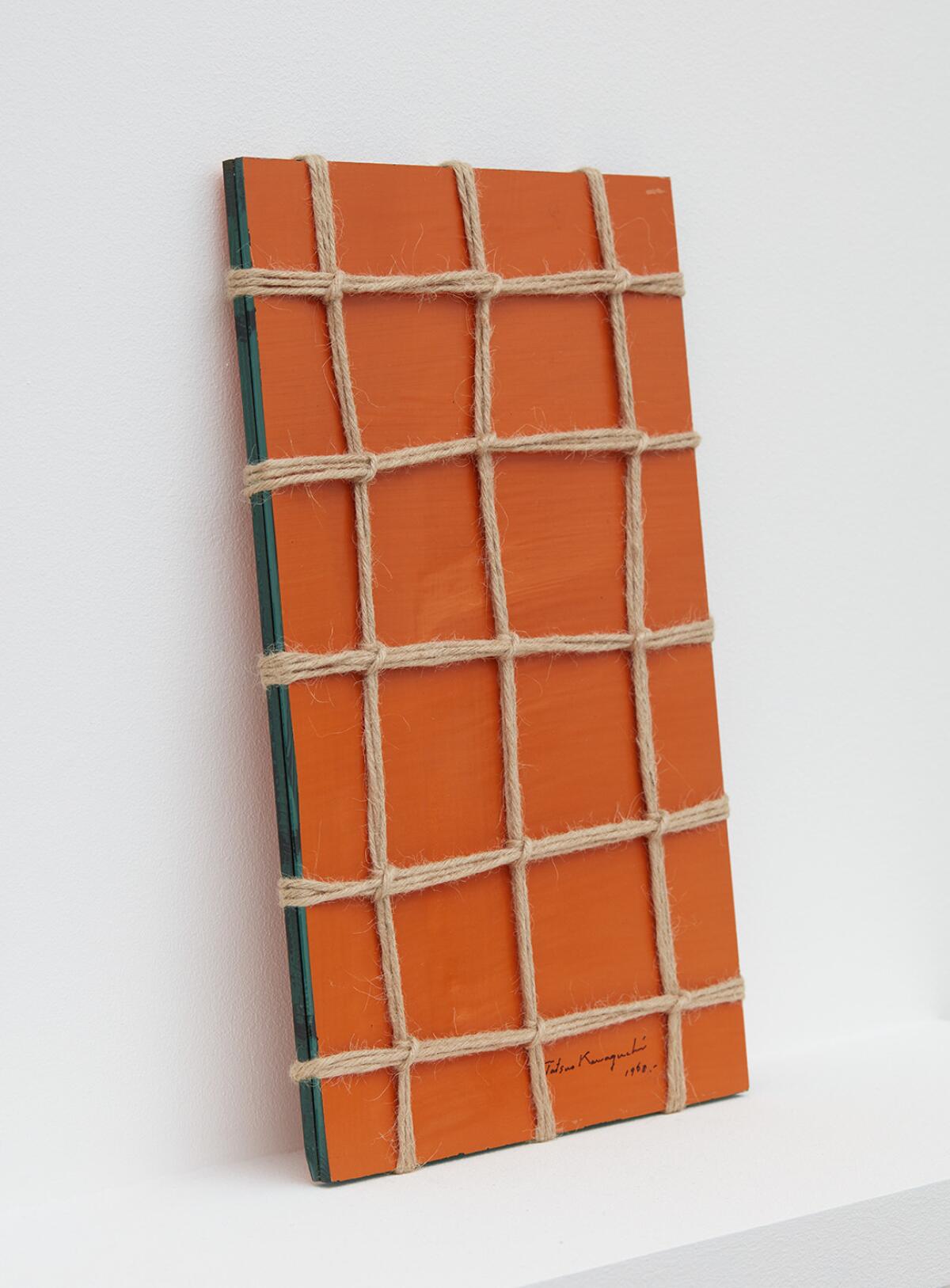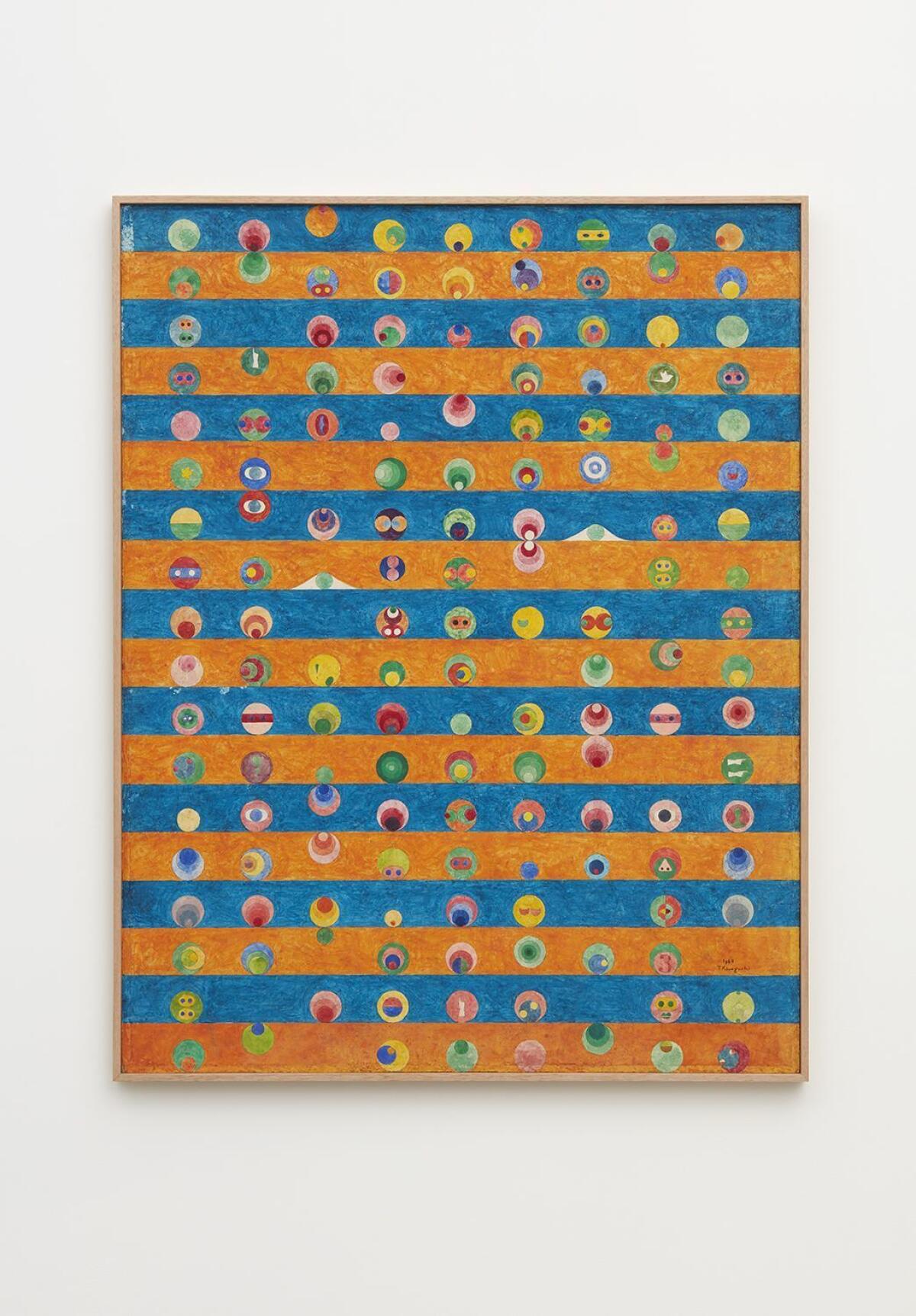Review: The clever conceptual riddles of Tatsuo Kawaguchi
A modest but absorbing exhibition of 10 early works introduces Japanese artist Tatsuo Kawaguchi, 77, to Los Angeles. Paintings, sculptures and photographs span just over a decade from 1964 to 1975.
Conceptual riddles are his stock in trade. “Two Mirrors (Between Mirror and Mirror)” is emblematic.
Made in the tumultuous counterculture year of 1968, the sculpture consists of two small mirrors held together face-to-face with twine, carefully wrapped and knotted in a Minimalist grid pattern. The outside of the mirrors is painted the earthen color of red clay, as if the object is an ancient vessel.
In a way, it is. With the mirrors’ reflective function nimbly thwarted, personal identity seems trapped inside the wry little sculpture. The knotted rope forcefully prevents it from getting out.
The beautifully wrapped package is simultaneously offered in the manner of a traditional Japanese gift. Like the sound of one hand clapping, Kawaguchi neatly drains an expressive self from his art.


“Exposure” (1971) is a large sheet of photographic paper that was exposed to ambient light in a dim room during the two-week run of an exhibition. Ostensibly its mottled, dense, gray surface is a pictorial record of everything that went on around it during a lengthy period. Focus shifts from the object, which possesses the visual weight of a sheet of lead, to what went on outside its frame — paradoxical but appropriate for a photograph.
Kawaguchi relegates the Industrial Age to history with “Iron of Iron and/or Tools; Pliers” (1975). A pair of iron pliers is embedded within a flat slab of smelted iron, like a trilobite in rock. Presented as a fossil left behind by an extinct civilization, the sculpture hums with the residue of time, not unlike “Exposure.”
The show’s earliest works are three quirky paintings from 1964, made when Kawaguchi was 24 and barely out of school. Horizontal stripes in yellow ochre paired with red or blue are dotted with a lineup of little geometric shapes.
Most are small circles inside circles. The watercolor shapes look like variations on Marcel Duchamp’s impish “Rotoreliefs” — spinning optical entertainments that create an illusion of depth while making a viewer dizzy.
In the wake of his landmark 1963 retrospective at the Pasadena Art Museum, Duchamp was on the brink of becoming international art’s most influential thinker. Kawaguchi collides French Dada with the Zen koan.
Kayne Griffin Corcoran Gallery, 1201 S. La Brea Ave., L.A. Through July 8; closed Sundays and Mondays. (310) 586-6886, www.kaynegriffincorcoran.com
Twitter: @KnightLAT
ALSO:
It's bathroom art: Joel Holmberg's toilet portraits
Datebook: Painted pools, Biblical women, John Divola's pictures and an art horror flick
Mozart in Trump Tower, and the art of getting political onstage
The biggest entertainment stories
Get our big stories about Hollywood, film, television, music, arts, culture and more right in your inbox as soon as they publish.
You may occasionally receive promotional content from the Los Angeles Times.








